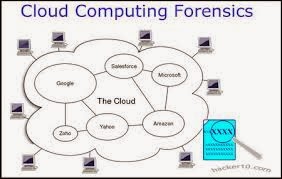The emergence and proliferation of cloud computing over the years have resulted in shifts in data processing and data-storage patterns. Though offering certain advantages for us, it also introduces certain vulnerabilities and challenges, not only for companies and individuals, but also digital investigators charged with the tasks of preventing /investigating or prosecuting data-related crimes committed by perpetrators who gain access to computing infrastructure, platforms and software applications on demand, via 'utility type' services similar to accessing an electricity grid.
Typically, users of cloud computing outsource data management or computer applications to a service provider in which data are stored across various servers, often without control or knowledge of the exact location of the data. This remote service, accessed via the Internet, allows information to be stored and processed in a 'cloud' by remote and very-large-scale date centres, with individuals and organisations then able to access resources to suit their own particular business requirements. These days, the examples are innumerable and may include email services such as gmail and hotmail, data storage or sharing services such as DropBox and Megaupload, application services such as Google Docs, and development platforms such as Amazon AWS. For original and complete post see here


